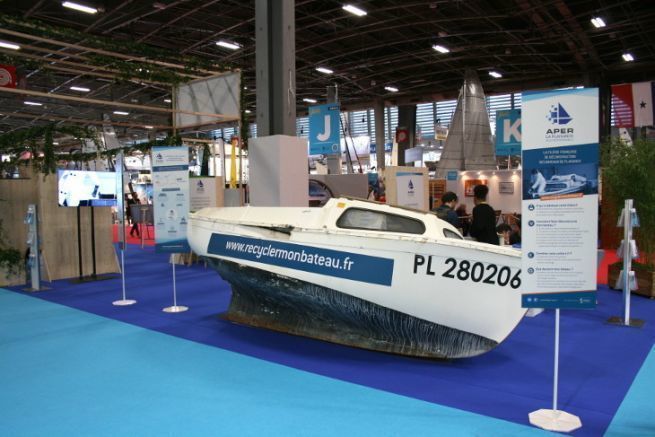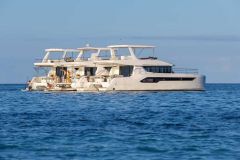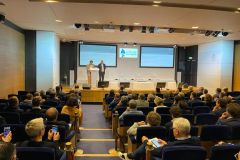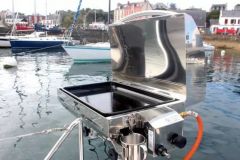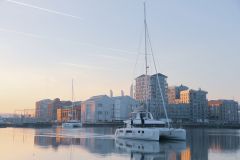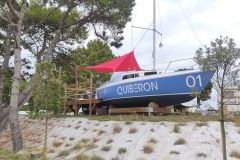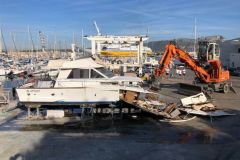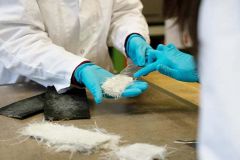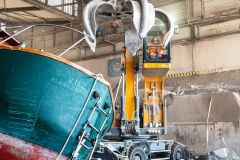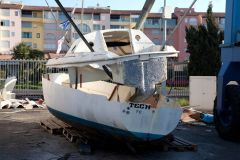A re-evaluated rate of ship dismantling
APER, Association pour la Plaisance Eco-Responsable, was created in February 2009 to prepare the arrival of a deconstruction channel for pleasure boats. Since September 2019, it has been piloting the national recycling and treatment process for boats that are no longer sailing. After a year and a half of existence, the system is well underway. Between its launch and the end of May 2021, it had enabled the deconstruction of 2,500 boats, including 800 motor monohulls, 738 sailboats, 750 dinghies and about 100 semi-rigids. If these figures are much lower than the objectives announced at the time of the creation of the sector, its managers explain it by the initial study, very theoretical. " It was a calculation based on the registrations of the Maritime Affairs and an average life span of the boats. This does not match the situation in the field. The demand is much lower than we imagined. Today, what is important is that anyone in France who wishes to do so has a dismantling solution. It is the first sector in the world. We are meeting all requests to date. For a yachtsman, the process is simple: he just has to go to the APER website (www.recyclermonbateau.fr) and let himself be guided. The 20,000 boats will be made, but in more time "says Jean-Paul Chapeleau, President of APER.
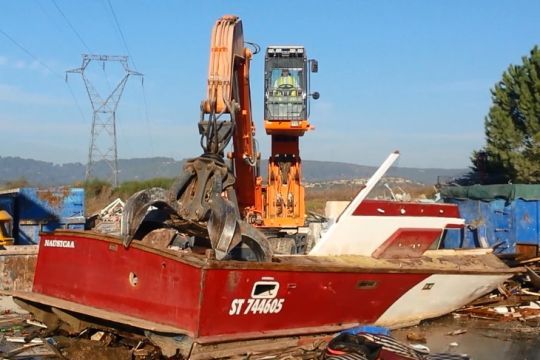
Only 25% of the mass of the boats not recovered
The traceability of waste required by the Ministry of the Environment allows APER to know the fate of old boats. Of the total mass of a pleasure boat, about 65% is composed of composite materials. 60% of these are recovered in CSR (solid fuel recovery) used to produce energy. 40% is stored or incinerated. 50% of the wood is transformed into chipboard and 50% into RDF. Metals are recycled at 100%. Electronic equipment, batteries and hydrocarbons are sent directly to their own recycling channels.
While it remains preferable to landfill, CSR is not a satisfactory outlet for composites. Fortunately, APER says it is working with the other automotive, wind and aerospace sectors to make progress on recycling. " Our working group is making progress. A guide is due to be published in 2022 to identify material flows, technological recycling solutions and their economic cost. The objective is to collectively define the interesting ways and direct the volumes of waste towards companies capable of recycling and thus make real channels emerge. We are also working with companies such as Batho, which gives a new life to boats on land as accommodation, or Captain Chercheur, with whom we have signed a partnership so that they can offer to buy back spare parts for boaters who have their boats dismantled "explains the president of APER.
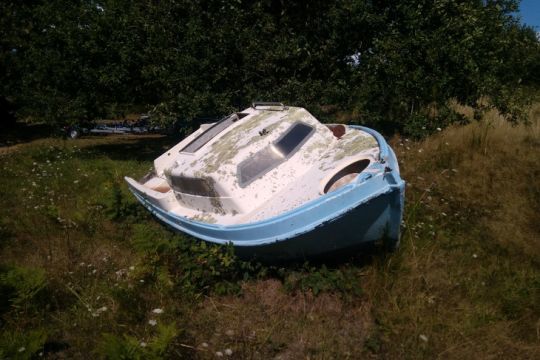
Financing the future coverage of transportation
APER has issued a request for proposals for the new 2022-2023 period, during which it wants to expand the network of certified deconstructors. " We currently have 26 operational centers. Our objective is to complete the territorial network to reach 45 sites in mainland France and overseas "says Jean-Paul Chapeleau.
If the financing of these centers at the current rate is not a problem, it could become one with a new element to come: the assumption of responsibility for transporting the boat to the dismantling site, which today is the responsibility of the owner-boater. " This will be mandatory from 2023, which will change our economic balance, with the cost almost doubling. For this, we need the support of the State, with an increase in the share of the DAFN (Duty of Francisation) allocated to deconstruction, which can go up to 5% within the framework of the law. We are thinking of anticipating this assumption of responsibility according to what it will attribute to the EPR sector in the 2022 finance bill. The eco-contribution of actors is also increasing. It has increased by 70% since 2019 "notes the president of APER. The association also wants to reach the 15% of marketers who are not yet members.
Administrative obstacles to be removed
To continue to grow, APER has identified several difficulties. It asks the State to accelerate the ICPE approval of dismantling centers and to reduce their cost. It also wishes to simplify the administrative management of the recovery of abandoned wrecks on the coast. For yachting professionals who do not know how to get rid of boats abandoned in their yard by former customers, the Nautical Industries Federation has developed a tailor-made service to obtain the necessary legal authorizations.
